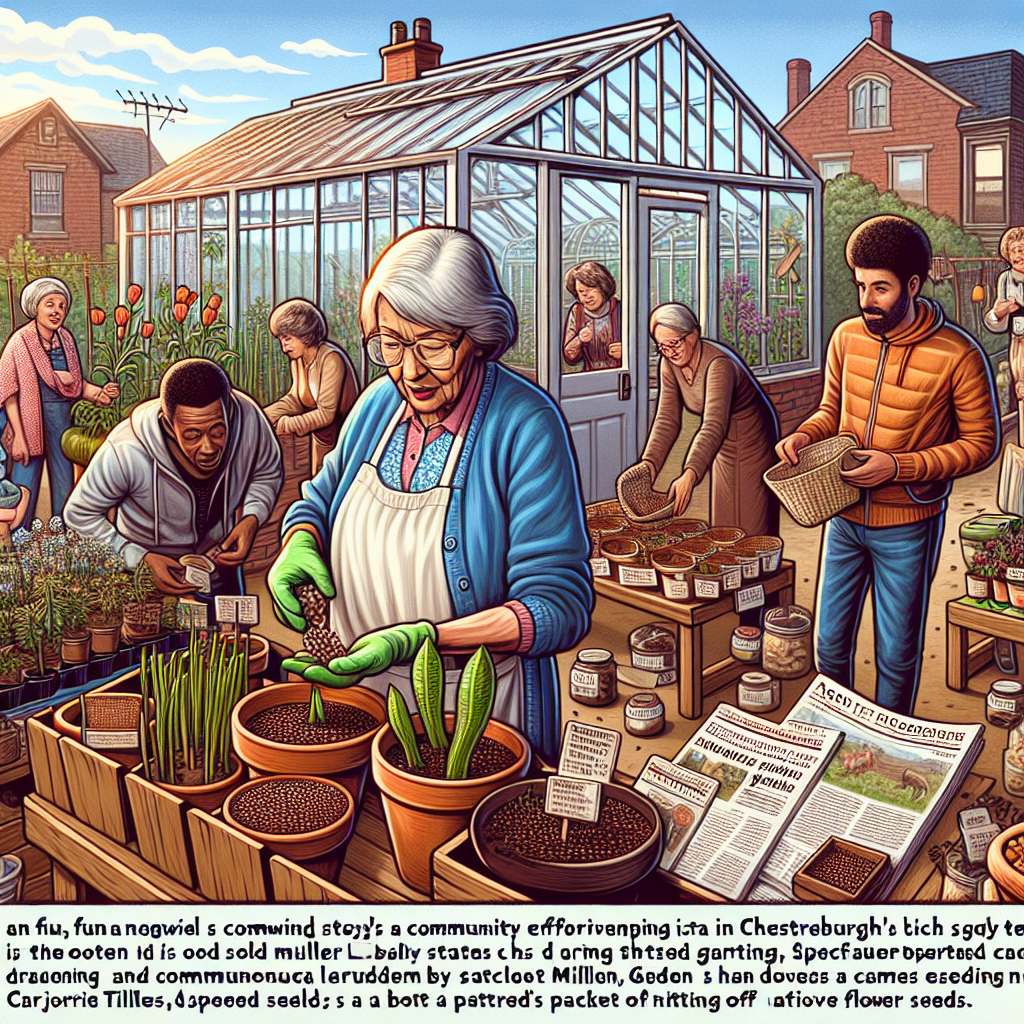**"Miller’s Greenhouse: Where Seeds and Stories Take Root in Chesterburgh"**

On the edge of Chesterburgh, where the maple trees lean toward the cracked sidewalks and the air still tastes faintly of cedarwood smoke, a quiet transformation is blooming in the most unexpected place: the old Miller’s Greenhouse. For decades, the faded glass panes and rusted metal frames of this once-thriving local nursery were home mostly to memories—a patchwork of whispering leaves, sunbaked soil, and the echoes of hands that once coaxed seedlings to life.
This spring, however, the greenhouse is waking up again, humming softly with new purpose. It is no longer just a relic of Chesterburgh’s agricultural past, but a communal garden and seed library, a seed starting haven for those who never had one before. The effort is led by Marjorie Tilling, a retired schoolteacher who grew up in Chesterburgh and saw this overlooked corner of town as a place ripe for regeneration, not ruin.
I first came across Marjorie while chasing the scent of damp earth on a morning wrapped in mist. Her hands, creased and strong, gently held a handful of soil as she explained the idea. “We’re not just planting seeds here,” she said softly, “we’re planting stories, memories, and futures.” The air inside the greenhouse smelled rich, a mix of peat and fresh growth, as light spilled quietly over rows of tomato starts and packets of heirloom beans.
The seed library concept, simple yet profound, allows townsfolk to borrow vegetable and flower seeds, cultivate them at home, and then return a portion of their harvest’s seeds the following season. For Marjorie, this cyclical exchange is more than agriculture—it’s a conversation across seasons and generations, a gentle rebellion against forgetfulness. “When we lose our seeds, we lose pieces of who we are,” she explained, eyes shining. “Our gardens carry our family recipes, our celebrations, our losses.”
Walking through the aisles, I met several volunteers and participants who have become caretakers of this legacy. Sam, a young dad with a bright smile and a curious daughter underfoot, talked about how growing food together has braided new rhythms into their hectic lives. “It’s grounding,” he said, pausing beside a small tray of basil. “When I’m digging in the dirt, I’m also digging into some kind of calm I didn’t know I was missing.”
What struck me most was how this project stitches together Chesterburgh’s varied threads: the elderly remembering the old ways, young families reclaiming their connection to the earth, and newcomers finding a foothold within this chorus of roots. The greenhouse’s glass, though cracked in places, now seems like a fragile lens framing a shared hope.
On a bench outside, I found Elsie, a lifelong resident known for her Saturday ritual of knitting in the park. She had just dropped off a packet of native flower seeds she’d saved from her garden last summer. “This town’s gardens tell so many stories,” she said quietly, her fingers twitching as if weaving invisible threads. “They speak of the people who loved this land before us, and of those who will love it after.”
Marjorie’s vision extends beyond the plants themselves. She has coordinated workshops on seed saving, soil stewardship, and traditional recipes, each gathering weaving a tapestry of learning and laughter. These sessions echo softly against the wooden shelves lined with jars of dried herbs—reminders of the time when food and memory lived side by side in every kitchen.
In an era when much of our food travels thousands of miles before it lands on our plates, this return to local seeds and hands-in-the-earth practices feels quietly radical. It is about reclaiming agency over the fragile thread that connects us to the land and to each other. Nestled among the rusted tools and wildflowers just outside the greenhouse, I could hear the hum of bees starting their day, an ancient aria for new beginnings.
As the afternoon light softened and shadows stretched l
